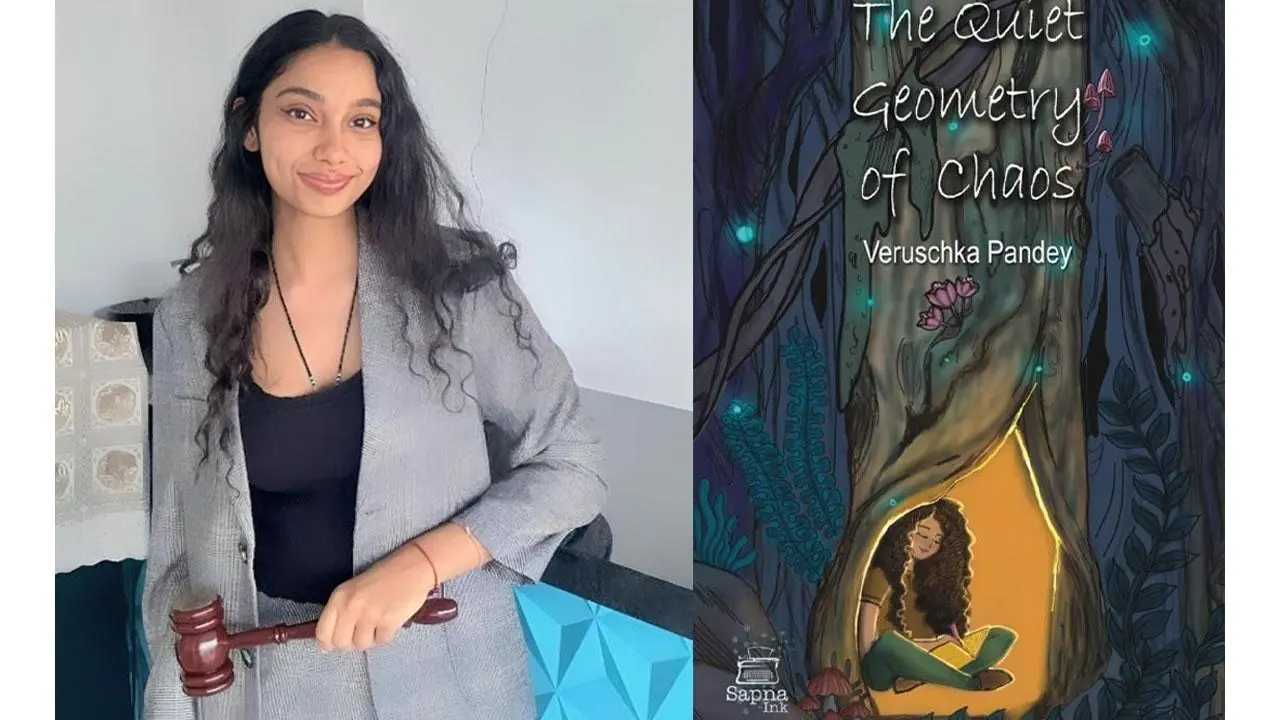The title The Quiet Geometry of Chaos is an artful metaphor, born from her fascination with physics, mathematics, and philosophy.

Veruschka Pandey
At just 16, Veruschka Pandey stands as one of India’s most fearless young voices-an author, activist, and empath whose words unravel the invisible knots of emotion, conflict, and identity in a turbulent world. Her newest poetry collection, The Quiet Geometry of Chaos, is a powerful follow-up to her bestselling debut released at the age of 12. This anthology is not just a literary feat-it is a profound meditation on what it means to be human in times of noise, grief, and relentless change.
A Young Voice with Unyielding Clarity
Veruschka’s poems read like the private diary of a generation-those on the cusp of adulthood, burdened by inherited trauma, silent battles, and global unrest. Written over a span of three years, her collection serves as both a personal chronicle and a universal reflection.
The title The Quiet Geometry of Chaos is an artful metaphor, born from her fascination with physics, mathematics, and philosophy. It suggests that within the seeming randomness of emotional pain and societal disorder, there is an underlying structure-a geometry of thought, pattern, and transformation. For Veruschka, chaos isn’t noise without meaning; it’s the very crucible from which poetry is born.
“It is only after a lot of mental and emotional chaos,” she says, “that a thought blooms into poetry and takes pattern and order.”
Exploring Deep Wounds with Tender Words
In her poem Anxiety and Depression, Veruschka offers one of the most searingly honest portrayals of mental illness from a teen’s perspective:
“Depression leaves me full, never hungry
I don’t want food
When I’m the prey. It eats me
It holds onto no physical form…”
These lines distill what millions of young people face-the invisible weight of anxiety, depression, and emotional isolation, often unspoken and misunderstood. In a few lines, Veruschka captures both the metaphorical and physical manifestations of mental distress. Her words are stripped of pretense, but loaded with emotional gravitas.
Her activism shines through in these moments-a humanitarian spirit devoted to amplifying the emotional truths that society often ignores. Whether addressing human rights, identity politics, war, or love, her voice is one of compassion, vulnerability, and deep empathy.
Poetry as Activism and Healing
More than a poet, Veruschka is an activist for mental health, emotional well-being, and human rights. Her poetry does not merely describe pain-it dares to sit with it, converse with it, and find meaning in its shadows.
One of the most haunting pieces in the book is A Dead Number, a poem that begins with a surreal, almost childlike act-dialing a deceased mother’s number:
“I rang a deceased sequence
And the ringing commenced
It rang five times and a stranger said ‘Hi!’
My youthful head filled with lies…”
The poem continues with a cascade of raw, unguarded questions: “Do you miss me? Does magic exist?! Please bring me a pallet of paints back…” It captures the piercing pain of loss, the aching desire for connection, and the whimsical innocence of a child grappling with the impossible.
Another poem, Guns and Bombs, is a haunting vision of childhood destroyed by war:
“Yesterday, by the shore, I caught a glimpse of a little girl
Enfolding an old newspaper into a boat, to send afloat
Within a stream of a million shimmering, silver pearls…”
The boat, made from news of destruction, becomes a vessel of memory, a fragile hope amid despair. The poem ends with a stark realization: “She was me. I was her.” Through simple yet layered imagery, Veruschka collapses the boundaries between self and other, past and present, innocence and trauma.
The Voice of a Generation
In a time dominated by distraction and disconnection, Veruschka Pandey’s poetry demands something rare-presence. She invites readers to pause, feel deeply, and witness the complex emotional landscapes of today’s youth. Her writing does not speak to the reader; it sits beside them.
Her work is a testament to the emotional intelligence, introspection, and courage that young people possess-qualities often dismissed in mainstream discourse. Veruschka’s poems illuminate the chaos not to frighten, but to help us find the “geometry in our souls,” as she beautifully describes it.
Why This Book Matters
The Quiet Geometry of Chaos is not merely a poetry collection-it is a cultural document, a psychological mirror, and a call to action. It reminds us that adolescents are not just passive recipients of the world’s problems, but active thinkers, feelers, and changemakers.
Veruschka Pandey is a rare and powerful voice. Her work bridges art and activism, grief and growth, chaos and structure. In a world that often undervalues softness, her poems are proof that vulnerability is not weakness-it is wisdom.
This book is essential reading for anyone seeking truth, empathy, and emotional clarity in the modern world.
The Quiet Geometry of Chaos by Veruschka Pandey is available now on Amazon India.
Recommended for readers of all ages who believe in the quiet power of words to heal, challenge, and transform.
Buy Now:
 Subscribe today by clicking the link and stay updated with the latest news!" Click here!
Subscribe today by clicking the link and stay updated with the latest news!" Click here!








